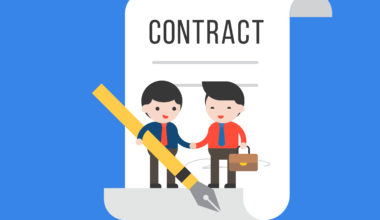You’re on the home stretch — you put in the pre-work, you pitched the client, the client reacted, and you sent a follow up email. Now what? The key to taking big deals from initial pitch to close is to become the deal champion for the right deals. Let’s begin by assessing where we stand.
Post-Pitch Assessment
As the deal champion, your job is to expertly lead your company’s sales process from pitch to close, navigating the client’s stakeholders (legal, procurement, etc.) and your internal company stakeholders (legal, finance, etc.). While some of this can only be learned by doing it within the role, there are many transferable skills. For example, the first step is to decide if the deal is worth perusing after the initial pitch.
Schedule time to debrief after the initial meeting and assign a numerical probability to the deal closing on a scale of 0 to 100%. Experienced big deal sellers know how to sense which deals are more likely to close intuitively. To further develop this skill, keep track of your probability rankings to assess your accuracy over time — this will help improve your sales “spidey sense” to sort out the best opportunities.
Your first meeting will fall into one of these four scenarios:
- The customer is interested in the terms: they bring up no significant objections, and indicate their motivation to take the deal forward using the terms provided. They may use phrases like “I don’t see why we wouldn’t do this.” or cliches like “seems like a no-brainer.” Your “sales gut” sees an inked deal in the future.
- The customer is interested but asks for changes to the terms: they may ask for a steeper discount, different value ads, or a safeguard you didn’t expect. Your “sales gut” thinks an inked deal is possible *if* agreeable terms are reachable.
- Something is amiss: the customer seemed disinterested, angry or distracted, or otherwise difficult to read. Your sales gut is flashing yellow, and you’re not 100% sure where you stand.
- The customer is not interested: the customer made it clear that a long-term commitment is off the table in the immediate term. For example, they may say they have a new CFO who wants to avoid signing any obligations for the first six months of their role, etc. Your sales gut said, “not now.”
For deals that fall into the first category, I recommend following up over email with a summary of the deal terms to get a written confirmation of acceptance. Once the client confirms in writing, you can send the contract for review and eventual signature.
Deals in the second category are the trickiest because our desire to overcome the challenge of closing the deal often overrides our judgment. Sometimes you’ll run into clients that want to negotiate for the sake of negotiating, and other clients will try to push you as much as possible to see what kind of value they can extract. When you’re dealing with changes to your proposed deal structure, I recommend following these four rules:
- Understand the line in the sand: clearly define what you’re willing to negotiate and how much upfront, and do not waiver. If your client is pushing you to cross the line, it’s best to walk away. When you push back, always justify why you are pushing back.
- Negotiate value outside of price discounts: I do not recommend negotiating price discounts for a laundry list of reasons. Establish your discounts per tier during pre-planning, and do not budge. Instead, focus on adding value outside price discounts (ex: extra services, enhanced support, workshops, etc.).
- Negotiate all deal points simultaneously: you’ll obtain better outcomes by negotiating the whole deal simultaneously versus focusing on individual deal elements.
- Think like a computer: try to act like a being of pure logic when approaching big deal negotiations. Our ego, emotions, and inherent desire to win and overcome challenges will push us into deals that don’t make sense. Remember: BOTH your company and the client’s company need to win for a deal to make sense.
For deals in the third category, I recommend following up with more detail than usual to see if the client surprises you. Send the client your proposal and summarize the deal and the value provided over email. Write the email assuming the client did not absorb the information if they seemed distracted. Sometimes clients surprise you, and they follow up by indicating their interest. Move on if they don’t follow up or their follow-up is cold to lukewarm.
Deals in the fourth category are straightforward. In your follow-up, indicate that you’ll follow up in the future and suggest that the client follow up if their situation evolves. Set a reminder for six or twelve months from the meeting to reassess the opportunity.
Getting the Contract Signed
For deals that are progressing, the last step is for you and the client to officially sign the contract to formalize or “close” the deal. You must continue to act as the deal champion until the deal is closed. Many salespeople relax after the agreement enters the contracting phase and assume that the company lawyers will finalize the deal — don’t do this!
The deal champion is responsible for pushing the deal along by consistently following up internally and externally and acting as a mediator for both sides to maintain momentum and keep the communication clear and friendly. Successful deal champions are fantastic at maintaining deal moment through the entire process and avoiding the most dangerous pitfall for big deals, the “lawyer battle.”
“Lawyer battle” is a legal limbo you must avoid at all costs. The deal loses its original purpose (value creation) during a lawyer battle. Your company’s and the client’s company lawyers dig deep trenches, hurling redlines back and forth, arguing over deal semantics in legalese. After months of negotiating, the deal will be canceled, or the frequency of redline revisions will drop off, aka a passive-aggressive deal loss.
How do you avoid a lawyer battle? Sometimes you can’t. If you see your deal descending into a lawyer battle, it’s often best to schedule a sync between you and the client contact(s) (without the lawyers) and have a heart-to-heart. Share your honest concern about how the deal is progressing. Sometimes the client contact can chat with their legal team and turn the situation around.
I recommend working with your company leadership to simplify your big deal agreements to make them as clear and concise as possible. The longer, more complicated the contract and the more the language is in cryptic lawyer speak (legalese), the more likely it is to fall into a lawyer battle. If you frequently have deals stuck in lawyer battles, I recommend setting up an internal meeting to debrief and troubleshoot the issue. Perhaps your contracts need some love.
If everything goes well, you and the client will sign the agreement. You’ll have lived up to your name of deal champion and taken a big deal from inception to close! The best salespeople can repeat this process over and over with limited guidance while continually refining their skills.
Part eight of my Art of the Big Deal series will summarize what we’ve learned.




